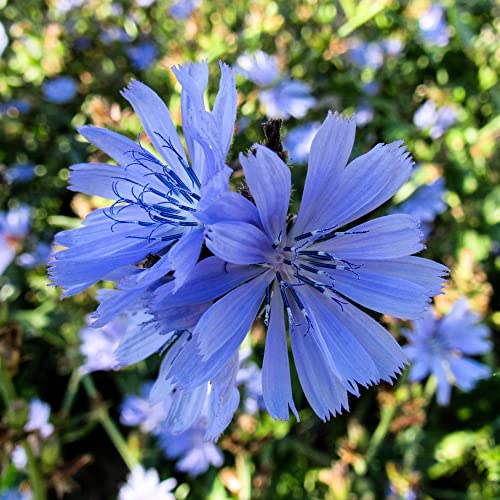
Dhara Seeds
Chicory Seeds
Estimated Free Delivery between April 18 and April 21.
Secured Payment Methods
Your transaction is protected with advanced security measures to keep your information confidential
Here's how you can plant Catalogna Chicory from seeds: 1. Choose the Planting Location: Select a location in your garden that receives partial to full sun. Chicory prefers well-draining soil with good matter content. 2. Soil Preparation: Prepare the soil by loosening it to a depth of about 6-8 inches. Remove rocks, weeds, and other debris. Incorporate matter such as compost into the soil to improve its fertility. 3. Sow the Seeds: Sow the Catalogna Chicory seeds directly into the prepared soil. The ideal spacing between rows should be about 18 inches, and you can sow the seeds about 1/inch deep. Space the seeds about 6 inches apart within the rows. If you're planting in rows, leave adequate space between them for easy access. 4. Watering: After sowing, water the soil thoroughly to ensure good seed-to-soil contact. Keep the soil consistently moist during the germination period, which typically takes about 7-days. 5. Thinning: Once the chicory seedlings have grown to a height of about 3-inches, thin them out by removing some of the seedlings to achieve the desired spacing. Leave the healthiest and strongest seedlings spaced about 1inches apart. Thinning helps prevent overcrowding and promotes better growth. 6. Care: Catalogna Chicory is relatively low-maintenance. Keep the soil consistently moist throughout the growing season. 7. Harvesting: You can start harvesting the outer leaves of the chicory plant when they reach a desirable size, usually around 8-inches in length. To harvest, simply cut the leaves at the base, leaving the center leaves to continue growing. Regular harvesting can encourage the plant to produce more leaves.












